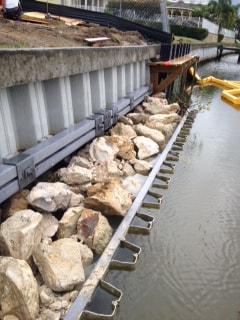
As climate change intensifies and sea levels continue to rise, the construction of seawalls has become a crucial aspect of coastal management for homeowners. Seawalls are engineered structures designed to protect property from erosion, flooding, and storm surge. With the increasing frequency of extreme weather events, understanding the key considerations for residential seawall construction is essential for homeowners looking to safeguard their investments and ensure the longevity of their properties. This article will explore the various factors that need to be taken into account when planning and executing a seawall project, including site assessment, design and materials, regulatory requirements, and ongoing maintenance.
Site Assessment: Understanding the Environment
The first step in seawall construction is conducting a thorough site assessment. This involves evaluating the coastal environment, including wave action, soil type, and existing marine life. Understanding these factors is crucial for determining the most effective design and materials for the seawall. For instance, areas with high wave energy may require stronger and more durable materials, while softer soils may necessitate a different construction approach. Additionally, a detailed survey can help identify potential environmental impacts, such as disruption to local wildlife or ecosystems, which may guide the design process to minimize adverse effects.
Design and Materials: Choosing the Right Components
Once the site assessment is complete, the next step is to design the seawall. The design should take into account various factors such as height, slope, and drainage features. A properly designed seawall will effectively dissipate wave energy and prevent erosion without causing adverse effects on the surrounding environment. It is essential to consult with experienced engineers who specialize in coastal structures to create a design that meets both functional and aesthetic requirements.
Regulatory Requirements: Navigating Permits and Codes
Before commencing construction, homeowners must navigate the regulatory landscape surrounding seawall construction. This includes obtaining necessary permits and adhering to local, state, and federal regulations. Each jurisdiction may have specific rules regarding seawall construction aimed at protecting both the environment and community interests. Homeowners should contact their local government or coastal management agency to understand the specific requirements and processes involved in securing the necessary permits.
Costs and Budgeting: Financial Planning for Seawall Projects
Seawall construction can be a significant financial investment, and homeowners must carefully plan their budgets to ensure they can complete the project without unexpected financial strain. Costs can vary widely based on factors such as the chosen materials, design complexity, site conditions, and labor rates. Homeowners should seek quotes from multiple contractors and consider obtaining a detailed breakdown of costs to understand where their money will be allocated.
Environmental Considerations: Balancing Protection and Ecology
While seawalls play a critical role in protecting residential properties from erosion and flooding, they can also have unintended consequences for the local ecosystem. The construction of a seawall can disrupt natural habitats, affect tidal flow, and alter sediment transport patterns. Thus, it is crucial for homeowners to prioritize environmental considerations when planning their seawall project.
Maintenance: Ensuring Longevity and Functionality
After the seawall is constructed, ongoing maintenance is essential to ensure its longevity and effectiveness. Homeowners should establish a regular inspection schedule to identify any signs of wear, damage, or erosion. This proactive approach will allow for timely repairs and prevent small issues from escalating into significant problems. Typical maintenance tasks may include cleaning debris, repairing cracks, and checking for signs of erosion around the base of the seawall.
Conclusion: Protecting Investments with Informed Decisions
In conclusion, constructing a residential seawall is a multifaceted process that requires careful consideration of various factors, including site assessment, design and materials, regulatory requirements, costs, environmental impacts, and ongoing maintenance. By understanding these key considerations, homeowners can make informed decisions that not only protect their properties but also contribute to the sustainability of coastal ecosystems. As climate change continues to pose challenges to coastal communities, investing in well-planned seawall construction is more important than ever for safeguarding homes and preserving our natural environments. By prioritizing both protection and ecological balance, homeowners will be better equipped to face the future of coastal living.